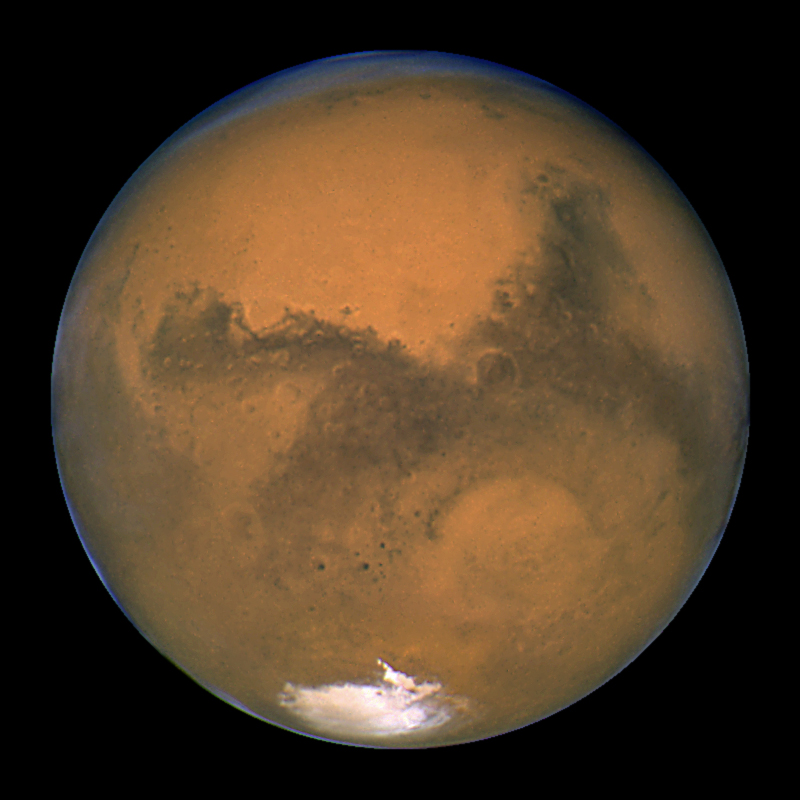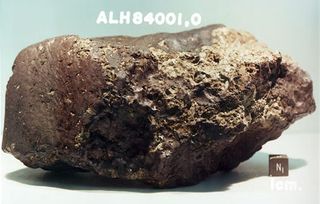Top 5 Attempts to Find Life on Mars

Since humans first began to wonder if there was life beyond Earth, one of the first places we hoped to find it was on Mars. While our expectations have changed from the idea of populated cities and Martians to the thought that microbial organisms may lie deep beneath Mars' surface, this hope hasn't died.
Here are the five best attempts to discover life on the surface of Mars.
1. Mariner 4
The first photos of Mars from orbit came from the NASA probe Mariner 4, which flew by the Red Planet in 1965. The probe's 21 photos of a dry, dusty surface disappointed those hoping for rivers, oceans or any signs of life.
Its findings largely killed the hope that Mars had humanlike intelligent life, and shifted the focus to searching for more basic organisms.
2. Viking
It was more than a decade later that the first Mars landers were able to send back photos from the surface of the planet. NASA's Viking program sent two probes to orbit the Red Planet, which each ejected landers that touched down on its surface. The first man-made vehicle to come in contact with the surface of Mars was Viking 1, which landed July 20, 1976. It was followed on Sept. 3 by Viking 2, which landed in a different spot.
Get the Space.com Newsletter
Breaking space news, the latest updates on rocket launches, skywatching events and more!
The two landers beamed back photos dispelling the notion completely that intelligent life was walking around Mars, or that liquid water was flowing on its surface. [Photo Timeline: The Search for Life on Mars]
Viking was equipped with experiments specifically designed to detect life in Martian soil, if it existed. One experiment did appear to find evidence for metabolic reactions. However, because other Viking experiments failed to detect organic molecules, the results were largely dismissed as being caused by non-living agents in the soil. Later studies, though, suggested that the organic building blocks of life may have been present in the Martian dirt tested by Viking, but that other chemicals there would have destroyed these organics when heated for the experiment. Ultimately, some researchers still debate what Viking's measurements mean.

3. ALH84001 Meteorite
A Martian meteorite discovered in Antarctica in 1984 called ALH84001 was found to have a mineral called magnetite that on Earth is associated with the presence of microorganisms. The meteorite is thought to have formed on Mars at least 16 million years ago, and landed on Earth roughly 13,000 years ago. Carbonate materials in the meteorite also indicate that liquid water was present when they formed. Finally, some have claimed that small structures inside the meteorite appear to be fossilized nanobacteria, though this idea has been controversial.
Similar signatures, and debates over what they mean, have been found in other meteorites originating on Mars in the years since.

4. Spirit and Opportunity
NASA's twin Mars Exploration Rovers Spirit and Opportunity landed on the Red Planet in January 2004. Within a few months, they'd found evidence that liquid water once existed on the Martian surface. Opportunity had found particular rock patterns inside a crater that indicated the presence of flowing water sometime in the past, and nearby chemicals suggested the site was once the shore of a saltwater sea.
5. Phoenix Lander
On May 25, 2008, NASA landed the Phoenix spacecraft on Mars' arctic plains to study whether liquid water may have existed there, creating an environment habitable to life. After about a month of operations, NASA announced that Phoenix had found the first proof of current water ice under the surface of Mars.
The lander had dug a small trench and observed chunks of a bright substance there that vaporized after a few days. Eventually, Phoenix's mass spectrometer was able to detect water vapor from a sample of Mars dirt. Significantly, this water was found near Mars' north pole, but not in its polar icecaps, indicating that water extends farther than just those areas of trapped water ice, dust and carbon dioxide.
The Future
So far, no attempt at finding life on Mars has been successful — but it's not too late. Scientists still think microbial life could exist deep underneath the Martian ground, and may have been present on the surface during the past. The latest exploration mission to Mars is NASA's Mars Science Laboratory rover, called Curiosity, which is due to land on Mars Aug. 5, 2012. Curiosity is slated to spend two years hunting for signs that Mars is, or ever was, habitable to life. What it will find is anyone's guess.
Visit SPACE.com for complete coverage of NASA's Mars rover landing Sunday. Follow Clara Moskowitz on Twitter @ClaraMoskowitz or SPACE.com @Spacedotcom. We're also on Facebook & Google+.

Join our Space Forums to keep talking space on the latest missions, night sky and more! And if you have a news tip, correction or comment, let us know at: community@space.com.

Clara Moskowitz is a science and space writer who joined the Space.com team in 2008 and served as Assistant Managing Editor from 2011 to 2013. Clara has a bachelor's degree in astronomy and physics from Wesleyan University, and a graduate certificate in science writing from the University of California, Santa Cruz. She covers everything from astronomy to human spaceflight and once aced a NASTAR suborbital spaceflight training program for space missions. Clara is currently Associate Editor of Scientific American. To see her latest project is, follow Clara on Twitter.











